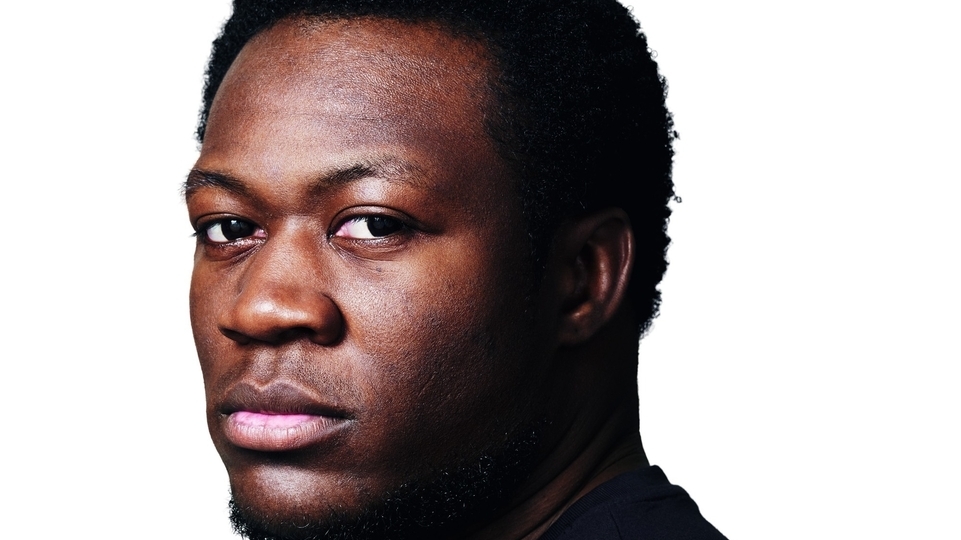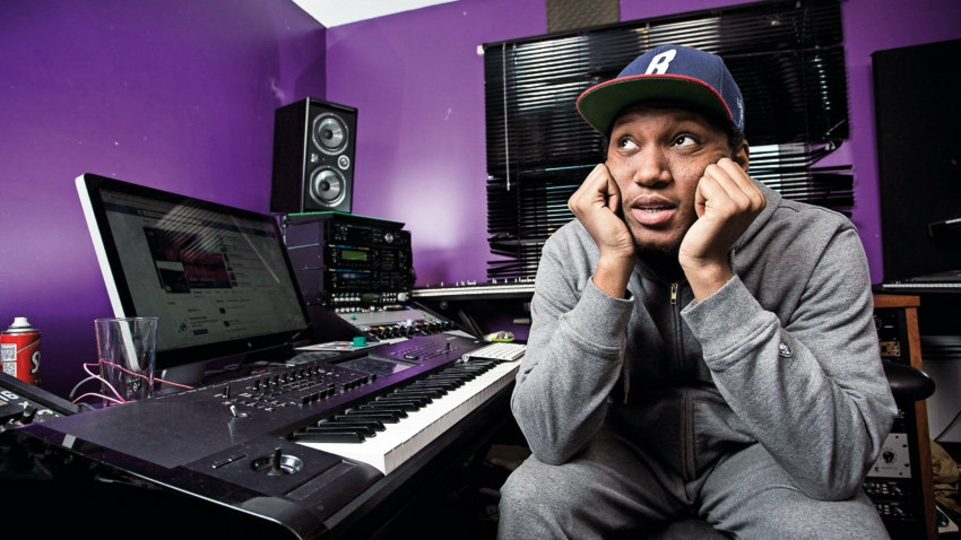
Mala: positive vibrations
As part of the ground-breaking dubstep crew DMZ, Mala’s mystical, hybrid sound captured the imagination of a new generation of dance music fans. As the genre evolved globally, so did Mala’s mission — to lead those fans towards the roots of authentic soundsystem culture, create uplifting experiences, and become the producer he’s always wanted to be
There are few artists who can rightly claim to have helped create a new genre of music in the 21st century. One of them is Mala.
For the past 15 years, the London-born producer and DJ has taken his bag of dubplates around the world, presenting the evolving dubstep sound with heavyweight knowledge of soundsystem culture’s past and present. He was going to celebrate his 40th birthday last summer by playing on some of the biggest festival stages around, but like so many others this past year, celebrations were cut short, and he and his dubplates have stayed at home.
“For the first time in a long, long time, in this year of not being able to travel, I feel settled,” Mala says. Behind the decks, he cuts a commanding, composed figure. At home, he’s relaxed and bright, laughing as his children tumble through the door with their school bags on, arms out for a bear-hug (“Yes, we’ll play later, yes, I love you too,” he reassures them gently). “That’s why I haven’t done anything like live streams since the lockdowns started,” he continues. “I’m taking this time as some me-time, where I’m allowed to not be public facing.”
Instead of touring, Mala has kept himself busy by writing music, hosting his IN THE BASSMENT radio show on Worldwide FM, coaching his son’s football team, and running outdoors, every day, in all weathers. He’s shared his running journey on social media, with all of its physical benefits and mental barriers, while speaking about kindness and self-love. In a time of unguarded storytelling about how the pandemic has affected artists, it’s apt that someone as sage as Mala has focused on emotional fortitude through positive action. It’s also a path he started on long before the pandemic.
In the early 2000s, dubstep was reverberating slowly. A tiny smattering of London pirate radio transmissions, record shops and clubs were interested in this sound, made by a few amateur producers in the city’s south-east boroughs; weed-smoking youngers from Croydon and Norwood who loved garage’s skippy swings and jungle’s explosive breakbeats, but wanted to peel them away to reveal something stranger. At the core of this was Mala, alongside fellow producers and DJs Loefah and Coki, and MC Sgt. Pokes. They called themselves DMZ.
Taken with record labels like Tempa, Big Apple and Tectonic Recordings and events like FWD>>, they were critical in converging dubstep’s earliest ideas into a recognisable genre. DMZ were like a Bruce Lee one-inch punch coming at your chest from a speaker stack, exercising restraint to create maximum dynamic impact. Their tracks were played out on dubplate for upwards of a year by selected DJs before release on limited vinyl runs, creating a frenzy of interest.
Rejecting garage’s by-then champagne flashiness and jungle’s high-octane machismo, dubstep was an anti-VIP affair and DMZ dances were the “demilitarized zone”. Bodies swayed in the near-pitch black and weed smoke, while ceiling-high rigs made the walls vibrate. With its tight-knit crew, DMZ became a centre of power that held significant influence over who and what came to be known as dubstep.
Considering what ravers were used to moving to, dubstep was a shock to the system. While house bumps along at around 120 to 130bpm and drum & bass and jungle rattle heads between 160 and 180bpm, DMZ stripped the rave for parts. Sparse 140bpm beats with half-time kicks and snares made it feel like it was all moving at 70bpm, shifting the dancefloor’s tectonic plates. Palettes varied, but DMZ focused on uncanny vocal samples and lashings of sub-bass punctuated with melancholic three-note melodies. On record insert labels, tracks were attributed to producers like totems: “Built by Mala, built by Loefah, built by Coki, built by Digital Mystikz”.
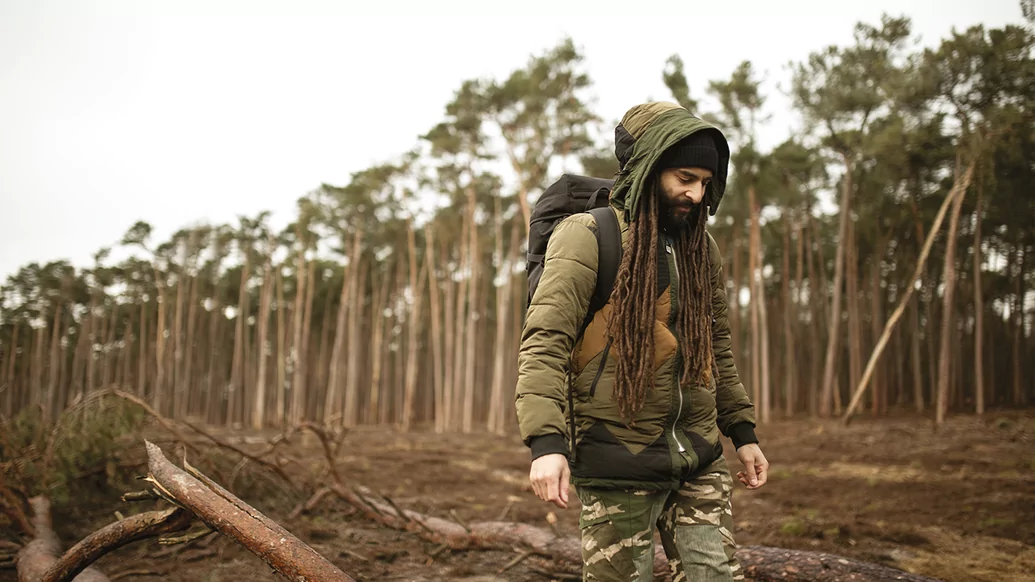

DUBSTEP WARZ
The first DMZ dance was held at 3rd Base in Brixton, south London, in January 2005. Almost exactly one year to the day, Mary Anne Hobbs presented Mala and his brothers-in-sound on an edition of BBC Radio 1’s Breezeblock show, titled Dubstep Warz. The impact of the broadcast was immense. Introducing dubstep to American and British listeners in real-time disrupted the scene’s hyper-regionalism.
For the next four years, as crews in the US, Japan and European rave hotspots pushed their own, mutating strains, DMZ hosted packed UK dances and played internationally as a rotating foursome, playing dubplate-heavy sets of tracks built by each other. Mala was being sent so much music from new producers outside of the DMZ inner circle that he started his own label, DEEP MEDi MUSIK, bolstering his standing as a curator of what dubstep was becoming.
But dubstep’s global spread took Mala and his London brothers by surprise. There was a pressure to carry the genre before many were able to fully articulate what it meant and could be, even to themselves. Their slow rumbling darkness was being blasted out by festival stages, fat paychecks and a headliner-focused individualism that didn’t sit right with the DMZ ethos. By 2010, the pressure had become too heavy for Mala to take, and shortly after the birth of his eldest child, he left London.
Rather than resigning himself to the inactive prestige of purism, Mala has spent the last decade leading dubstep fans to an authentic soundsystem culture. Those who have followed him from DMZ, and, increasingly, a younger audience cultivated at bass festivals like Croatia’s Outlook and Dimensions, are being tilted toward the roots, regardless of whether either group comes to the dance with lived experience of it.
He remembers the first time he met David Rodigan, the British broadcaster and reggae DJ. Mala was playing with him at a festival in Sicily, “and he said, ‘My sons go to DMZ, and I want to thank you, because dubstep has brought us older heads back into the game’. I was stunned, because Rodigan is massive, but he thought we’d opened him up to a new, young audience — your auntie loves Rodigan, but maybe not your raver mates.”
With Mala as their generation’s axis point, this younger rave audience can see these histories in action for themselves. When he played a much-anticipated Boiler Room set in London in 2015, a rare livestream event for him, he did it on two conditions: that the room was powered by the Leeds-based Sinai Soundsystem, and that the lights were dimmed as low as the broadcast would allow for.
Over the years, Mala’s seen an “obvious gap” between how dubstep is presented in a contemporary club and festival context and the potential it has in being presented on a dub soundsystem. “Is it an age thing?” he asks, “I don’t think so. I think it’s a scene thing, and there are certain ways of running things in any given scene, but the potential in merging them is immense.” Active, old school dub artists tend to play now as they have done for decades: all night long, on their own soundsystems, in venues that are happy to support such single-artist presentations. They rarely play on mixed club line-ups outside their immediate musical sphere.
“You don’t go to see Jah Shaka at Fabric, but I bet if you took your Fabric-going friends to a Shaka dance they would love it,” he says. “We decided to do The Weekender because it brought these scenes and generations together.”
The Weekender is an annual event held at Bristol’s Trinity Centre that brings together DEEP MEDi MUSIK and Teachings In Dub, a soundsystem led by DJ Stryda of Dubkasm that presents roots reggae and dub music to Bristol’s student-age clubbers. The line-up varies each year, but Friday night typically hosts DEEP MEDi MUSIK-affiliated artists and Saturday night is powered by soundsystems. Foundational figures like Jah Shaka, Channel One, Aba Shanti-I, Mungo’s Hi-Fi, Congo Natty, Maasai Warrior and Sir Coxsone have all stepped up at one time or another.
At the first Weekender, the weight of history was obvious to Mala. “Congo Natty went to hear Jah Shaka play when he was a teenager, I used to hear Congo play at jungle raves when I was a teenager, and the MCs that were with Congo used to come and hear me play at DMZ. So we had four generations of soundsystem culture in the room, all playing together.” As the night drew to a close and Jah Shaka stepped up to the mic; “He said, ‘This is my 43rd year of playing at Bristol Trinity’ — and I don’t think there was anybody in the dance other than Congo who was even in their 40s,” says Mala in warm astonishment. “So this isn’t just any old sound in any old place. These things are important.”
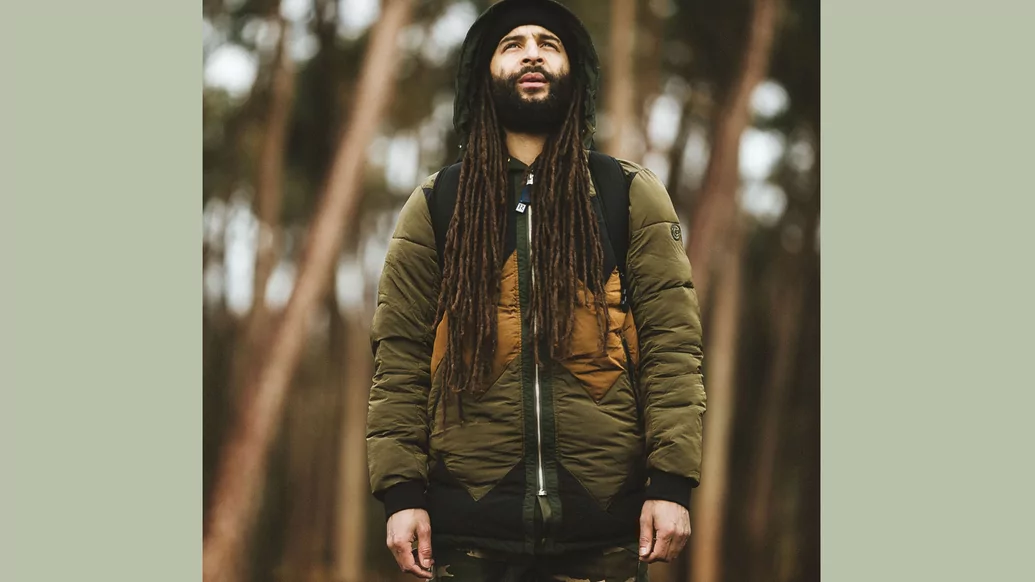
"If you give attention and intent towards negative energy, that energy will feed you. I decided to give my energy to my blessings and that led to positive manifestations.”
LINEAGE
Dubstep may be part of the canon of British dance music, but at the heart of it, Mala has had other ambitions — the respect of his dub elders and being considered part of a lineage. “It was only when DMZ started to play on systems like SubDub that the heads started to get where we were coming from,” he insists. “Londoners were really stepping in someone else’s territory up in Leeds, in The West Indian Centre — they take great pride in what they do and don’t let just anybody play on their sound. That taught me that regardless of who you think you are and what you’ve achieved elsewhere, if you want to be in their world then you have to earn your stripes.”
On this, he is his most animated: “Just because our little sound of dubstep has the word ‘dub’ in it, doesn’t mean that none of dem sound man have to respect us or like what we do,” he says. “Mark Iration of Iration Steppas used to say, ‘Your tunes are sick but I don’t know why it’s called dubstep — it sounds like techno to me’.” Suddenly, a laugh rumbles out. He remembers when Ricardo Villalobos played his track ‘Left Leg Out’, at the wrong tempo, during one of his Fabric sessions.
“My bredren called me up afterwards. He’d recorded it on his phone and sent it to me: ‘I’m sure this is your track, the crowd went off!’ Think about that: what do you call a techno DJ who plays a dubstep track at the wrong tempo?” he asks, pausing for a childlike, dramatic effect. “You call him a DJ!” he exclaims. “He’s open minded, he doesn’t give a shit, he’ll play good music regardless and make it fit.”
DEEP MEDi MUSIK was originally founded to release Mala’s more abstract productions, but it quickly became a home for a new, international generation of bass producers. Among others, there’s Bristol’s Kahn and Ishan Sound, Leeds’s Jack Sparrow and Sheffield’s Commodo. Kromestar, Quest, Swindle and Silkie are some of the Londoners, Goth-Trad represents Tokyo, and Belgian duo A Taste Of Struggle (A/T/O/S) are the label’s first live group proper. Dub poetics, skronky jazz, roots reggae, hip-hop and grime are now all folded into DEEP MEDi MUSIK, which celebrates its 15th birthday this summer.
As a label owner, Mala takes a hands-off approach to what each artist delivers but comes at his role with an encouraging mindset. “It’s important for me to be surrounded by younger artists,” he says, “and my responsibility is not to mould people, but to observe and encourage them to be their true selves.” When Swindle came to him in the early 2010s with a selection of grime club bangers and some more jazzy, melodic work, Mala could see Swindle’s enthusiasm for the latter and encouraged him to “do the jazz”; the last track on Swindle’s 2013 album, ‘Long Live The Jazz’, bears those exact three words in tribute.
What Mala does play an active role in, though, is how releases are pushed to his audience. “I’ve always seen the dubplate as my A&R. It’s the part of a process that a lot of people underestimate,” he says. “Playing a dub in a dance around the world for a year can be the difference in somebody having a groundbreaking record or not.” For club-focused artists who see the label as a platform for international club and festival bookings, and having the DEEP MEDi MUSIK name launch their career, there’s a significant element of trust that comes with that.
“Some people don’t have vision or patience. They want things to turn around quickly,” Mala says. “But you have to ask yourself: do you want to release 10 tracks a year on 15 different labels, have all the labels communicate on how best to look after your career, and you sell maybe a couple of hundred units of each? Or do you want to work with one label, take your time, and build something together? How deep that goes is down to the artist’s mentality.”
Throughout 2017, Mala played out a dubplate of an eerie, dynamic piano track with layered sub-bass and string and woodwind parts. Titled ‘Empire Of Dirt’, the track was made by Croatian producer Egoless, “but he wanted to do things old school. He didn’t want people to know the title of it, or that he’d made it, and he didn't want anybody to play the track out but me,” says Mala.
After heightened speculation in forums and YouTube comment sections, DEEP MEDi MUSIK released Egoless’ ‘Empire Of Dirt’ EP in 2018 and “it transformed his whole career,” Mala says. “There are many factors that have gone into his success within the scene, but that record basically made him a wanted man for club and festival bookers. And who had the vision and who took the risk to run it like that? Both of us.”
It’s an imperfect way of working as a label in 2021, though, and he admits as much. “I’ve been slated probably more times than I’d like to know behind my back, because I might have someone’s tune on dub for a year but they wanted it to come out in two or three months,” Mala says. “It took me a long time to understand how significant signing to DEEP MEDi MUSIK was for some people, because they put their dreams in your hands when they give you their music. As I’ve got older I’ve definitely understood that responsibility more.”
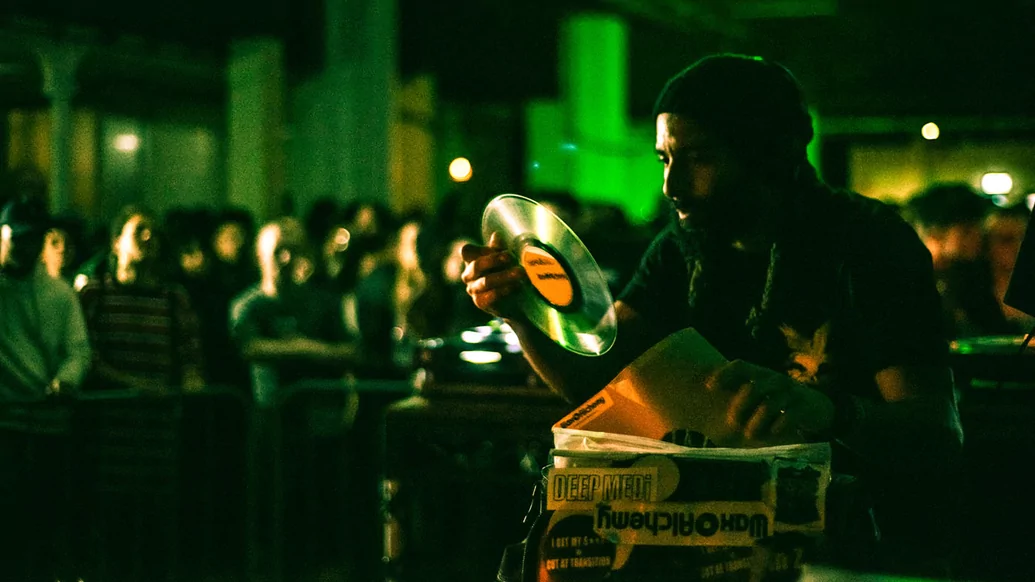

DUBPLATES
The ratio of dubplates to bought records in Mala’s own record bag is “around 80:20”. He used to get his dubs cut on heavyweight acetate by engineer Jason Goz at South London’s Transition Studios, but he’s switched it up in recent years. As club and festival bookers were asking him to play longer sets and tours stretched on, he encountered a not uncommon problem — his bag was getting heavier and harder to travel with.
While playing a DEEP MEDi show with Goth-Trad, the Tokyo artist dipped into his record bag “and pulled out this super-thin, clear vinyl,” Mala remembers. “I was like, ‘Wow, what the hell is that?’” Goth-Trad hooked him up with Suwanai Tamotsu, the engineer and dub cutter behind Japanese company Wax Alchemy.
It works like this: a typical picture disc vinyl is made up of two thin, clear sheets of vinyl; you place the picture card in the middle of the two sheets, then print them all together. Wax Alchemy uses the equivalent of one of those sheets of vinyl to cut a dubplate. A normal 12-inch cut on acetate, without the sleeve, weighs about 234 grams. A Wax Alchemy 12-inch weighs 94 grams. “And it’s thin,” emphasises Mala. “You can fit double the amount of records into your bag and it still weighs less than it normally would. I cut with Wax Alchemy now so I can tour longer sets.”
What kind of impact has this had on his sound? The old school etiquette of bringing heavyweight dubs to the dance means that some might raise their eyebrows at such a change. “People might think I’m a purist but I’m really not,” he says. “I sincerely appreciate and respect that people may hold me in high regard, but had we been purists we would have never made DMZ in the first place. And anyway, nuff of dem soundsystem man play on CDs these days!” he says with hearty laughter. “Authenticity becomes relative eventually.”
South Norwood, the neighbourhood that Mala grew up in, is one of the most south-easterly postcodes in London. Growing up on the outer reaches of a capital city can be a disconnective experience. It’s your city still, but the action often feels like it’s happening elsewhere and your postcode can be your whole universe. The outer reaches can raise dreamers.
Mala and Coki went to school together. In between long afternoons of playing football (Mala played for Millwall FC throughout his teens), they’d listen to early-to mid-’90s rave tape-packs from soundsystem crews like Desert Storm and Eskimo Noise, and fell hard for jungle music. When they met Loefah, they started making and swapping beats, and listening to janky pirate radio signals in their cars.
Each honed in on different elements of what was to become the DMZ sound. Loefah once described his half-step as “trying to re-invent jungle in my head”, stripping out the breaks but maintaining a groove, somehow. Coki flipped dub’s minimalist minor scales into major ones, creating buzzing riffs that rip through the gloom.

"I’ve tried to tell a story of our times through instrumental records. I've always hoped my beats make people, for a moment, become able to forget not who they are, but everything they think they are.”
Mala’s sound swarms the dance. He worked on minor keys and drew from techno drum programming to toughen and quicken the dub pulse, his beats suspended in a haunted neverland somewhere between Basic Channel and Channel One. Throughout his solo 12-inches and collaborations with Coki as Digital Mystikz, his industrial-tinged dub sound taps into the wearisome forward push of city life. Amongst the dread, Mala presents the listener with what an accelerated modern life has robbed them of — stillness, with enough space between the notes for us to read between the lines.
In the 2000s, Mala would smoke weed, read books and build beats. Between 2003 and 2009 his focus was making dubs for the dance, and from this arose some of the greatest Mala productions — which is to say, eternal classics of the genre. Music became a regular enough source of income by 2007 that he left his job as a youth worker and has done music ever since. Though memories of that time are, somewhat expectedly, a bit hazy, the overarching feeling he describes is of gratitude.
“I’ve always felt that [in making music] I was given all this time to explore how I interacted with the world and how the world interacted with me, and that it’s such a shame that the majority of people are not able to experience life with this amount of free time,” he says. “I felt guilty about that for a long time, but then I realised that, although we’re all born into different circumstances, we are nevertheless all blessed and all cursed. It just depends what you give your energy to. If you give attention and intent towards negative energy, that energy will feed you. I decided to give my energy to my blessings and that led to positive manifestations.”
By the end of the 2000s, “things were getting pretty strange within the music industry and within our community,” he remembers. “Lots of people became very busy and successful. There was more money, more events, more drugs and drink, and before you know it people became unrecognisable. Things mutated from what was honestly a very organic, healthy, positive environment into something very toxic.” Where did the toxicity come from? “A lot of it was down to what was happening in America, with what we’ll call ‘brostep’,” he says, describing the aggressive and wobbly style that defined dubstep on the US EDM circuit.
“That made a lot of people very, very angry,” he says, “and rather than looking at it like ‘Look at what our small scene from London has achieved’, and take it as a chance for them to evolve their own sound, a lot of people just shut down. They felt so disgruntled by this new wave of music that they ruined their own creativity by focusing on all the negative energy.” He pauses mournfully. “It was heavy. It seemed to become about competition, with people trying to assassinate people’s characters when they’re not there to defend themselves.”
He takes a shallow breath and waits. Mala’s reputation for a steady sense of control precedes him, so his vulnerability in this moment comes as a surprise. “I understand that there have been long-term benefits for me in moving on, but it’s come at a great personal cost. The loss of dear friends from my life broke my heart. But there was no longer a sense of unity, and I had to continue on my own journey.”
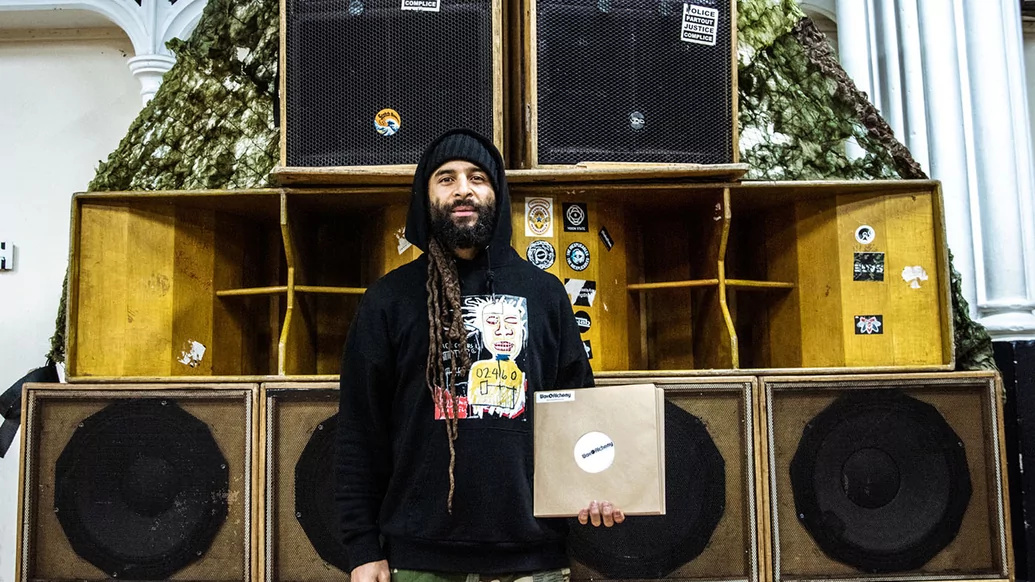

SPACE
In 2010, Mala released Digital Mystikz’s ‘Return II Space’ on DMZ, presenting six tracks over three slabs of heavyweight vinyl. Space was, as ever, a key instrument in play, but the sound was more taut and clear than anything before it. Banding primal drums and brooding dub frequencies together with an elastic rhythmic tension, ‘Return II Space’ saw the industrial swarm of his early beats break out of the murk, able to detonate a dubstep dance or a techno rave in equal measure.
The release of ‘Return II Space’ also marked a new journey in his music-making, and saw him lean forward into the album format. “I always told myself that if I made an album it would need a clear narrative concept,” he remembers. “I was so used to making dubplates, and felt I’d have to manufacture a story to justify making an album back then, when I wanted it to translate a lived experience.”
That experience came in 2011, when radio broadcaster Gilles Peterson invited him to Cuba to record with live musicians for his debut album proper, 2012’s ‘Mala In Cuba’. They went through a similar process together some years later, for 2016’s Peruvian-inspired ‘Mirrors’. Both were released on Peterson’s label Brownswood Recordings. “Thank god Gilles gave me such literal briefs — it allowed me to write quite simply.”
There are two artists who capture the essence of what Mala works to achieve on his albums. One is Augustus Pablo, the late Jamaican record producer and melodica player whose lingering, melancholy tones and Rastafarian faith informed the sound of his spiritual, free-form style of roots reggae and dub. “‘Jah Dread’ still speaks volumes to me,” Mala says. “Different messages are always coming through in that music, in the melodies and space in the sound. It’s very mystical to me.”
The other is British-Indian musician Nitin Sawhney. An old friend gave Mala a copy of Sawhney’s 1999 album ‘Beyond Skin’ when it came out. “It definitely wasn’t my type of music then,” he admits, but the tactile live South Asian instrumentation and vocalisations, subtle political messages and blend of trip-hop and drum & bass production styles spoke to him massively. At least once a year since, he’s sat down for a solo deep listening session of ‘Beyond Skin’ in full.
Above all else, he hears and senses freedom in Pablo’s and Sawhney’s work. “As a producer and a human being, it’s very important that we feel free. We see so much madness in the world because people don’t feel free and we’re not given enough information to become educated and act,” he says tenderly. “Nina Simone said that the role of the artist is to tell the story of the times, and I’ve tried to tell a story of our times through instrumental records. I've always hoped my beats make people, for a moment, become able to forget not who they are, but everything they think they are.”
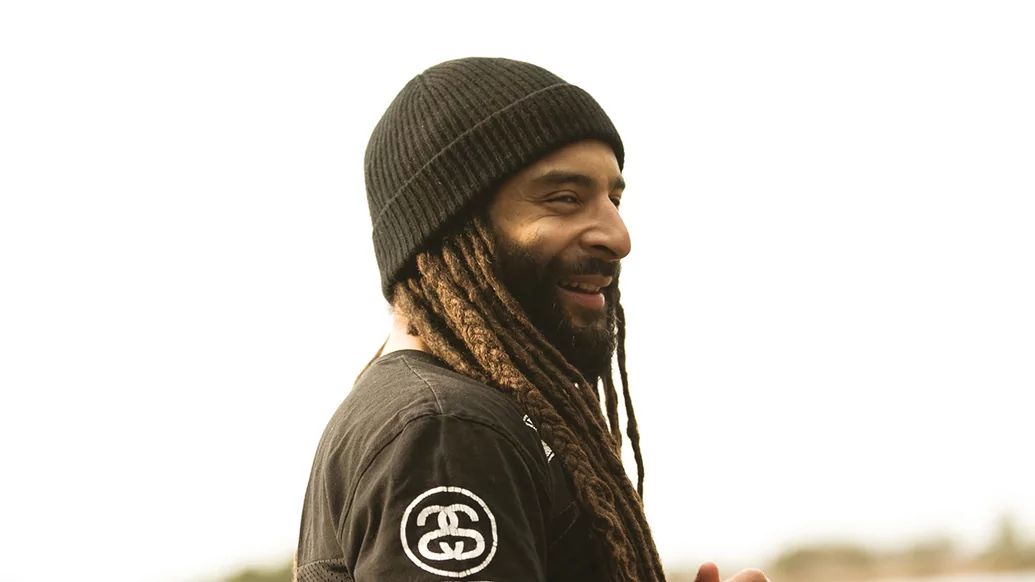

NEW CHAPTER
As the COVID-19 pandemic ground the live music industry to a halt, Mala had already been making moves to spend less time on the road and more time making music. After a collaboration with British composer Paul Gladstone-Reid on the 2018 BBC broadcast of ‘The Ruins Of Empire’, which saw UK rapper, author and activist Akala perform the poem of the same name, Mala has started working with Akala on ideas for an album, and other collaborations have taken shape, too. For a producer who has only ever used voices as disembodied samples, working with vocalists and composers feels like a whole new chapter.
“I’ve had such a deep yearning in the past few years to become the producer that I’ve always wanted to be, even after all these years,” he says. “I’m not as prolific in the studio as, say, Skream, who can bang out good tunes all day. It takes me a lot longer to make music, especially on my own, so I’m really inspired by working with vocalists,” he continues. “How can I contribute to their goals and dreams, their messages and visions?”
In doing so, he’s become less precious about his process. “A melody that comes to me at 2am can often feel good in the moment, but I can tie myself in knots for days, trying to get it to work in a track,” he continues. “With other people it’s like, ‘You like that melody? Nah? Cool, scrap it and move on’. So I like the fact that I can work on music and not have to think about it coming from Mala all the time.”
He’s been working with a composer from the Belgian National Orchestra and London R&B vocalist Greentea Peng. Mala remixed a track by British singer-songwriter Natty so thoroughly that Natty asked him to release it as an original, so Mala re-started his I&I label to do so. He keeps in touch with James Blake, who encourages him to come out to Los Angeles and work with him. “Maybe one day,” Mala grins.
2021 will also mark a project that fans will be delighted to learn of. All of his tracks from DMZ and labels like Soul Jazz Records — around 40 of them all in — have been remastered, and he plans to release them digitally for the first time, so that listeners can finally have high- quality files of their favourites. In a bid to satisfy vinyl enthusiasts and DJs while preserving the sentimental value of those original pressings, and hopefully take the edge off the inflated prices that his old records run for on Discogs, he’s also considering pressing the remasters.
“Nuff people tell me they still want those tracks on dubplate, so I’m trying to think of a creative way to do that,” he says. “And the digital side of it is important, too, because when somebody goes to listen to me on Spotify they’re not getting a clear representation of what I’m really about.” This cuts to the heart of his work, with his ethics rooted in the past but methods looking to the future. He knows what he stands for and where he wants to go next.
“I don’t care so much about reaching a million Spotify streams or being sampled by some bigger artist than me,” he says. “For me, it’s about being able to walk into the dance, shake hands with people like Channel One and play on their sound. I count being able to do that among my life’s greatest achievements.
“In the most unselfish way possible, making music is an exploration of self and therefore of the universe, because we’re part of everything, right?” Mala continues, “and the dance presents a wonderful opportunity to allow ourselves just to be. When I go and listen to Jah Shaka, that non-aggressive way of presenting music allows the audience to be themselves with it. And because the music is so deeply drenched in messages, both worldly and otherworldly, you exist in those places simultaneously for those moments.
“I always thought that was escapism,” he adds tenderly, “but it’s not — it’s actually living. So for me to play and make music the way I do, I am aiming to have no worries, no wants, no needs, no desires; where everything is harmonious, without conflict. If that’s how we live in the dance, maybe we can live like that in the world, too.”

